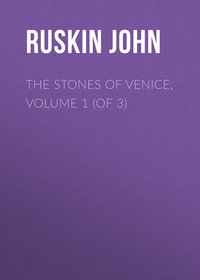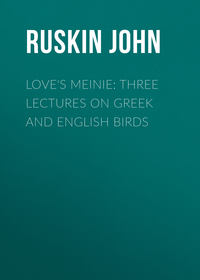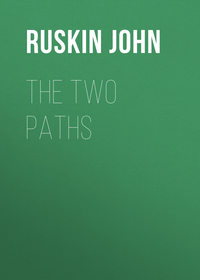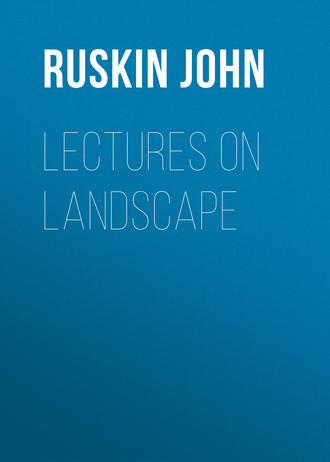 полная версия
полная версияLectures on Landscape

John Ruskin
Lectures on Landscape / Delivered at Oxford in Lent Term, 1871
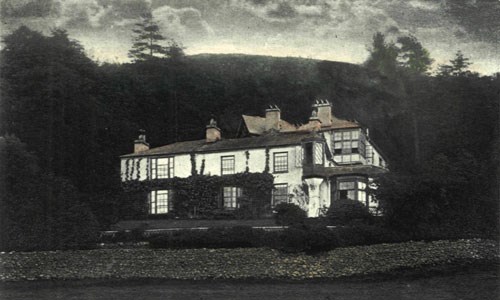
BRANTWOOD
FROM A PHOTOGRAPH
PREFATORY NOTE
THESE Lectures on Landscape were given at Oxford on January 20, February 9, and February 23, 1871. They were not public Lectures, like Professor Ruskin's other courses, but addressed only to undergraduates who had joined his class. They were illustrated by pictures from his collection, of which several are here reproduced, and by others which may be seen in the Oxford University Galleries or in the Ruskin Drawing School.
W.G.C.LECTURES ON LANDSCAPE
I.
OUTLINE
1. In my inaugural lecture,1 I stated that while holding this professorship I should direct you, in your practical exercises, chiefly to natural history and landscape. And having in the course of the past year laid the foundational elements of art sufficiently before you, I will invite you, now, to enter on real work with me; and accordingly I propose during this and the following term to give you what practical leading I can in elementary study of landscape, and of a branch of natural history which will form a kind of center for all the rest—Ichthyology.
In the outset I must shortly state to you the position which landscape painting and animal painting hold towards the higher branches of art.
2. Landscape painting is the thoughtful and passionate representation of the physical conditions appointed for human existence. It imitates the aspects, and records the phenomena, of the visible things which are dangerous or beneficial to men; and displays the human methods of dealing with these, and of enjoying them or suffering from them, which are either exemplary or deserving of sympathetic contemplation. Animal painting investigates the laws of greater and less nobility of character in organic form, as comparative anatomy examines those of greater and less development in organic structure; and the function of animal painting is to bring into notice the minor and unthought of conditions of power or beauty, as that of physiology is to ascertain the minor conditions of adaptation.
3. Questions as to the purpose of arrangements or the use of the organs of an animal are, however, no less within the province of the painter than of the physiologist, and are indeed more likely to commend themselves to you through drawing than dissection. For as you dissect an animal you generally assume its form to be necessary and only examine how it is constructed; but in drawing the outer form itself attentively you are led necessarily to consider the mode of life for which it is disposed, and therefore to be struck by any awkwardness or apparent uselessness in its parts. After sketching one day several heads of birds it became a vital matter of interest to me to know the use of the bony process on the head of the hornbill; but on asking a great physiologist, I found that it appeared to him an absurd question, and was certainly an unanswerable one.
4. I have limited, you have just heard, landscape painting to the representation of phenomena relating to human life. You will scarcely be disposed to admit the propriety of such a limitation; and you will still less be likely to conceive its necessary strictness and severity, unless I convince you of it by somewhat detailed examples.
Here are two landscapes by Turner in his greatest time—Vesuvius in repose, Vesuvius in eruption.
One is a beautiful harmony of cool color; and the other of hot, and they are both exquisitely designed in ornamental lines. But they are not painted for those qualities. They are painted because the state of the scene in one case is full of delight to men; and in the other of pain and danger. And it is not Turner's object at all to exhibit or illustrate natural phenomena, however interesting in themselves.

VESUVIUS IN ERUPTION.
From the painting by Turner.
He does not want to paint blue mist in order to teach you the nature of evaporation; nor this lava stream, to explain to you the operation of gravity on ponderous and viscous materials. He paints the blue mist, because it brings life and joy to men, and the lava stream because it is death to them.
5. Again here are two sea-pieces by Turner of the same period—photographs from them at least. One is a calm on the shore at Scarborough; the other the wreck of an Indiaman.
These also are each painted with exquisitely artistic purpose: the first in opposition of local black to diffused sunshine; the second in the decorative grouping of white spots on a dark ground. That decorative purpose of dappling, or ποικιλια, is as studiously and deliciously carried out by Turner with the Dædalus side of him, in the inlaying of these white spots on the Indiaman's deck, as if he were working a precious toy in ebony and ivory. But Turner did not paint either of the sea-pieces for the sake of these decorous arrangements; neither did he paint the Scarborough as a professor of physical science, to show you the level of low tide on the Yorkshire coast; nor the Indiaman to show you the force of impact in a liquid mass of sea-water of given momentum. He painted this to show you the daily course of quiet human work and happiness, and that, to enable you to conceive something of uttermost human misery—both ordered by the power of the great deep.
6. You may easily—you must, perhaps, for a little time—suspect me of exaggeration in this statement. It is so natural to suppose that the main interest of landscape is essentially in rocks and water and sky; and that figures are to be put, like the salt and mustard to a dish, only to give it a flavor.
Put all that out of your heads at once. The interest of a landscape consists wholly in its relation either to figures present—or to figures past—or to human powers conceived. The most splendid drawing of the chain of the Alps, irrespective of their relation to humanity, is no more a true landscape than a painting of this bit of stone. For, as natural philosophers, there is no bigness or littleness to you. This stone is just as interesting to you, or ought to be—as if it was a million times as big. There is no more sublimity—per se—in ground sloped at an angle of forty-five, than in ground level; nor in a perpendicular fracture of a rock, than in a horizontal one. The only thing that makes the one more interesting to you in a landscape than the other, is that you could tumble over the perpendicular fracture—and couldn't tumble over the other. A cloud, looked at as a cloud only, is no more a subject for painting than so much feculence in dirty water. It is merely dirty air, or at best a chemical solution ill made. That it is worthy of being painted at all depends upon its being the means of nourishment and chastisement to men, or the dwelling place of imaginary gods. There's a bit of blue sky and cloud by Turner—one of the loveliest ever painted by human hand. But, as a mere pattern of blue and white, he had better have painted a jay's wing: this was only painted by him—and is, in reality, only pleasant to you—because it signifies the coming of a gleam of sweet sunshine in windy weather; and the wind is worth thinking of only because it fills the sails of ships, and the sun because it warms the sailors.
7. Now, it is most important that you should convince yourselves of and fully enter into this truth, because all the difficulty in choosing subject arises from mistakes about it. I daresay some of you who are fond of sketching have gone out often in the most beautiful country, and yet with the feeling that there was no good subject to be found in it. That always arises from your not having sympathy enough with its vital character, and looking for physical picturesqueness instead. On the contrary, there are crude efforts at landscape-painting, made continually upon the most splendid physical phenomena, in America, and other countries without any history. It is not of the slightest use. Niagara, or the North Pole and the Aurora Borealis, won't make a landscape; but a ditch at Iffley will, if you have humanity in you—enough in you to interpret the feelings of hedgers and ditchers, and frogs.
8. Next, here is one of the most beautiful landscapes ever painted, the best I have next to the Greta and Tees.
The subject physically is a mere bank of grass above a stream with some wych-elms and willows. A level-topped bank; the water has cut its way down through the soft alluvion of an elevated plain to the limestone rock at the bottom.
Had this scene been in America, no mortal could have made a landscape of it. It is nothing but a grass bank with some not very pretty trees scattered over it, wholly without grouping. The stream at the bottom is rocky indeed, but its rocks are mean, flat, and of a dull yellow color. The sky is gray and shapeless. There's absolutely nothing to paint anywhere of essential landscape subject, as commonly understood.
Now see what the landscape consists in, which I have told you is one of the most beautiful ever painted by man. There's first a little bit of it left nearly wild, not quite wild; there's a cart and rider's track through it among the copse; and then, standing simply on the wild moss-troopers' ground, the scattered ruins of a great abbey, seen so dimly, that they seem to be fading out of sight, in color as in time.
These two things together, the wild copse wood and the ruin, take you back into the life of the fourteenth century. The one is the border-riders' kingdom; the other that of peace which has striven against border-riding—how vainly! Both these are remains of the past. But the outhouses and refectory of the abbey have been turned into a farmhouse, and that is inhabited, and in front of it the Mistress is feeding her chickens. You see the country is perfectly quiet and innocent, for there is no trace of a fence anywhere; the cattle have strayed down to the riverside, it being a hot day; and some rest in the shade and two in the water.
They could not have done so at their ease had the river not been humanized. Only a little bit of its stony bed is left; a mill weir, thrown across, stays the water in a perfectly clear and delicious pool; to show how clear it is, Turner has put the only piece of playing color in all the picture into the reflections in this. One cow is white, another white and red, evidently as clean as morning dew can wash their sides. They could not have been so in a country where there was the least coal smoke; so Turner has put a wreath of perfectly white smoke through the trees; and lest that should not be enough to show you they burnt wood, he has made his foreground of a piece of copse just lopped, with the new fagots standing up against it; and this still not being enough to give you the idea of perfect cleanliness, he has covered the stones of the river-bed with white clothes laid out to dry; and that not being enough yet, for the river-bed might be clean though nothing else was, he has put a quantity more hanging over the abbey walls.
9. Only natural phenomena in their direct relation to humanity—these are to be your subjects in landscape. Rocks and water and air may no more be painted for their own sakes, than the armor carved without the warrior.
But, secondly. I said landscape is to be a passionate representation of these things. It must be done, that is to say, with strength and depth of soul. This is indeed to some extent merely the particular application of a principle that has no exception. If you are without strong passions, you cannot be a painter at all. The laying of paint by an insensitive person, whatever it endeavors to represent, is not painting, but daubing or plastering; and that, observe, irrespective of the boldness or minuteness of the work. An insensitive person will daub with a camel's hair-brush and ultramarine; and a passionate one will paint with mortar and a trowel.
10. But far more than common passion is necessary to paint landscape. The physical conditions there are so numerous, and the spiritual ones so occult, that you are sure to be overpowered by the materialism, unless your sentiment is strong. No man is naturally likely to think first of anatomy in painting a pretty woman; but he is very apt to do so in painting a mountain. No man of ordinary sense will take pleasure in features that have no meaning, but he may easily take it in heath, woods or waterfalls, that have no expression. So that it needs much greater strength of heart and intellect to paint landscape than figure: many commonplace persons, bred in good schools, have painted the figure pleasantly or even well; but none but the strongest—John Bellini, Titian, Velasquez, Tintoret, Mantegna, Sandro Botticelli, Carpaccio and Turner—have ever painted a fragment of good landscape. In missal painting exquisite figure-drawing is frequent, and landscape backgrounds in late works are elaborate; but I only know thoroughly good landscape in one book; and I have examined—I speak deliberately—thousands.
11. For one thing, the passion is necessary for the mere quantity of design. In good art, whether painting or sculpture, I have again and again told you every touch is necessary and beautifully intended. Now it falls within the compass of ordinary application to place rightly all the folds of drapery or gleams of light on a chain, or ornaments in a pattern; but when it comes to placing every leaf in a tree, the painter gets tired. Here, for instance, is a little bit of Sandro Botticelli background; I have purposefully sketched it in the slightest way, that you might see how the entire value of it depends on thoughtful placing. There is no texture aimed at, no completion, scarcely any variety of light and shade; but by mere care in the placing the thing is beautiful. Well, every leaf, every cloud, every touch is placed with the same care in great work; and when this is done as by John Bellini in the picture of Peter Martyr,2 or as it was by Titian in the great Peter Martyr, with every leaf in a wood he gets tired. I know no other such landscape in the world as that is, or as that was.
12. Perhaps you think on such conditions you never can paint landscape at all. Well, great landscape certainly not; but pleasant and useful landscape, yes; provided only the passion you bring to it be true and pure. The degree of it you cannot command; the genuineness of it you can—yes, and the depth of source also. Tintoret's passion may be like the Reichenbach, and yours only like a little dripping Holywell, but both equally from deep springs.
13. But though the virtue of all painting (and similarly of sculpture and every other art) is in passion, I must not have you begin by working passionately. The discipline of youth, in all its work, is in cooling and curbing itself, as the discipline of age is in warming and urging itself; you know the Bacchic chorus of old men in Plato's Laws. To the end of life, indeed, the strength of a man's finest nature is shown in due continence; but that is because the finest natures remain young to the death: and for you the first thing you have to do in art (as in life) is to be quiet and firm—quiet, above everything; and modest, with this most essential modesty, that you must like the landscape you are going to draw better than you expect to like your drawing of it, however well it may succeed. If you would not rather have the real thing than your sketch of it, you are not in a right state of mind for sketching at all. If you only think of the scene, "what a nice sketch this will make!" be assured you will never make a nice sketch of it. You may think you have produced a beautiful work; nay, perhaps the public and many fair judges will agree with you; but I tell you positively, there will be no enduring value in what you have thus done. Whereas if you think of the scene, "Ah, if I could only get some shadow or scrawl of this to carry away with me, how glad I should be!"—then whatever you do will be, according to your strength, good and progressive: it may be feeble, or much faultful, but it will be vital and essentially precious.
14. Now, it is not possible for you to command this state of mind, or anything like it, in yourselves at once. Nay, in all probability your eyes are so satiated by the false popular art surrounding us now on all sides, that you cannot see the delicate reality though you try; but even though you may not care for the truth, you can act as if you did, and tell it.
Now, therefore, observe this following quite plain direction. Whenever you set yourself to draw anything, consider only how best you may give a person who has not seen the place, a true idea of it. Use any means in your power to do that, and don't think of the person for whom you are drawing as a connoisseur, but as a person of ordinary sense and feeling. Don't get artist-like qualities for him: but first give him the pleasant sensation of being at the place, then show him how the land lies, how the water runs, how the wind blows, and so on. Always think of the public as Molière of his old woman; you have done nothing really great or good if you can't please her.
15. Now beginning wisely, so as to lose no time or labor, you will learn to paint all the conditions of quiet light and sky, before you attempt those of variable light and cloud. Do not trouble yourselves with or allow yourselves to be tempted by any effects that are brilliant or tremendous; except only that from the beginning I recommend you to watch always for sunrise; to keep a little diary of the manner of it, and to have beside your window a small sketch-book, with pencil cut over night, and colors moist. The one indulgence which I would have you allow yourselves in fast coloring, for some time, is the endeavor to secure some record at the instant of the colors of morning clouds; while, if they are merely white or gray or blue, you must get an outline of them with pencil. You will soon feel by this means what are the real difficulties to be encountered in all landscape coloring, and your eyes will be educated to quantity and harmonious action of forms.
But for the rest—learn to paint everything in the quietest and simplest light. First outline your whole subject completely, with delicate sharp pencil line. If you don't get more than that, let your outline be a finished and lovely diagram of the whole.
16. All the objects are then to be painted of their proper colors, matching them as nearly as you can, in the manner that a missal is painted, filling the outlined shapes neatly up to their junctions; reënforcing afterwards when necessary, but as little as possible; but, above all, knowing precisely what the light is, and where it is.3
17. I have brought two old-fashioned colored engravings,4 which are a precise type of the style I want you to begin with. Finished from corner to corner, as well as the painter easily could; everything done to good purpose, nothing for vain glory; nothing in haste or affectation, nothing in feverish or morbid excitement. The observation is accurate; the sentiment, though childish, deep and pure; and the effect of light, for common work, quite curiously harmonious and deceptive.
They are, in spite of their weaknesses, absolutely the only landscapes I could show you which give you a real idea of the places, or which put your minds into the tone which, if you were happy and at ease, they would take in the air and light of Italy.
I dwell on the necessity of completion especially, because I have lost much time myself from my sympathy with the feverish intensity of the minds of the great engravers; and from always fastening on one or two points of my subject and neglecting the rest.
18. We have seen, then, that every subject is to be taken up first in its terminal lines, then in its light and shade, then in its color.
First of the terminal lines of landscape, or of drawing in outline.
I think the examples of shell outline in your copying series must already have made you feel the exact nature of a pure outline, the difficulty of it, and the value.
But we have now to deal with limits of a more subtle kind.
The outline of any simple solid form, even though it may have complex parts, represents an actual limit, accurately to be followed. The outline of a cup, of a shell, or of an animal's limb, has a determinable course, which your pen or pencil line either coincides with or does not. You can say of that line, either it is wrong or right; if right, it is in a measure suggestive, and nobly suggestive of the character of the object. But the greater number of objects in a landscape either have outlines so complex that no pencil could follow them (as trees in middle distance), or they have no actual outline at all, but a gradated and softened edge; as, for the most part, clouds, foam, and the like. And even in things which have determinate form, the outline of that form is usually quite incapable of expressing their real character.

19. Here is the most ordinary component of a foreground for instance, a pleasantly colored stone. Any of its pure outlines are not only without beauty, but absolutely powerless to give you any notion of its character, although that character is in itself so interesting, that here Turner has made a picture of little more than a heap of such stones, with blue water to oppose their color. In consequence of these difficulties and insufficiencies, most landscape-painters have been tempted to neglect outline altogether, and think only of effects of light or color on masses more or less obscurely defined. They have thus gradually lost their sense of organic form, their precision of hand, and their respect for limiting law; in a word, for all the safeguards and severe dignities of their art. And landscape-painting has, therefore, more in consequence of this one error than of any other, become weak, frivolous, and justly despised.
20. Now, if any of you have chanced to notice at the end of my "Queen of the Air," my saying that in landscape Turner must be your only guide, you perhaps have thought I said so because of his great power in melting colors or in massing light and shade. Not so. I have always said he is the only great landscape-painter, and to be your only guide, because he is the only landscape-painter who can draw an outline.
His finished works perhaps appear to you more vague than any other master's: no man loses his outlines more constantly. You will be surprised to know that his frankness in losing depends on his certainty of finding if he chooses; and that, while all other landscape-painters study from Nature in shade or in color, Turner always sketched with the point.
"Always," of course, is a wide word. In your copying series I have put a sketch by Turner in color from Nature; some few others of the kind exist, in the National Gallery and elsewhere. But, as a rule, from his boyhood to the last day of his life, he sketched only with the fine pencil point, and always the outline, more if he had time, but at least the outline, of every scene that interested him; and in general, outline so subtle and elaborate as to be inexhaustible in examination and uncopiable for delicacy.
Here is a sketch of an English park scene which represents the average character of a study from Nature by Turner; and here the sketch from Nature of Dumblane Abbey for the Liber Studiorum, which shows you what he took from Nature, when he had time only to get what was most precious to him.
21. The first thing, therefore, you have to learn in landscape, is to outline; and therefore we must now know precisely what an outline is, how it ought to be represented; and this it will be right to define in quite general terms applicable to all subjects.
We saw in the fifth Lecture5 that every visible thing consisted of spaces of color, terminated either by sharp or gradated limits. Whenever they are sharp, the line of separation, followed by the point of your drawing instrument, is the proper outline of your subject, whether it represents the limits of flat spaces or of solid forms.
22. For instance, here is a drawing by Holbein of a lady in a dark dress, with bars of black velvet round her arm. Her form is seen everywhere defined against the light by a perfectly sharp linear limit which Holbein can accurately draw with his pen; the patches of velvet are also distinguished from the rest of her dress by a linear limit, which he follows with his pen just as decisively. Here, therefore, is your first great law. Wherever you see one space of color distinguished from another by a sharp limit, you are to draw that limit firmly; and that is your outline.




